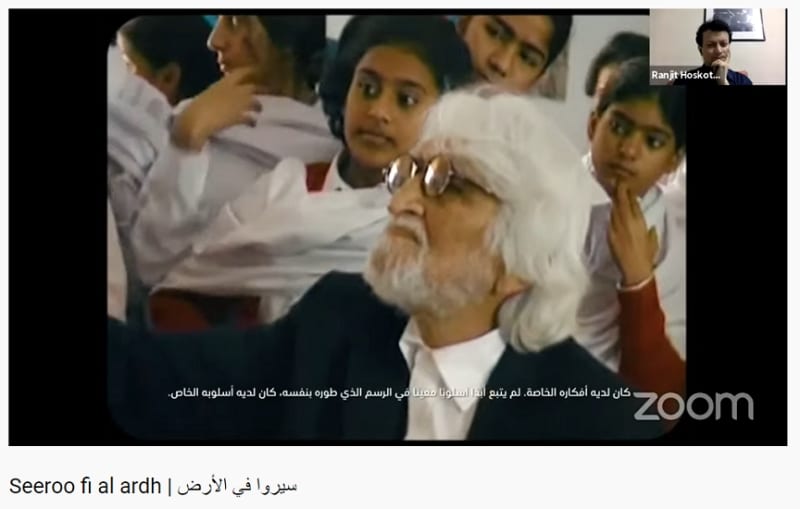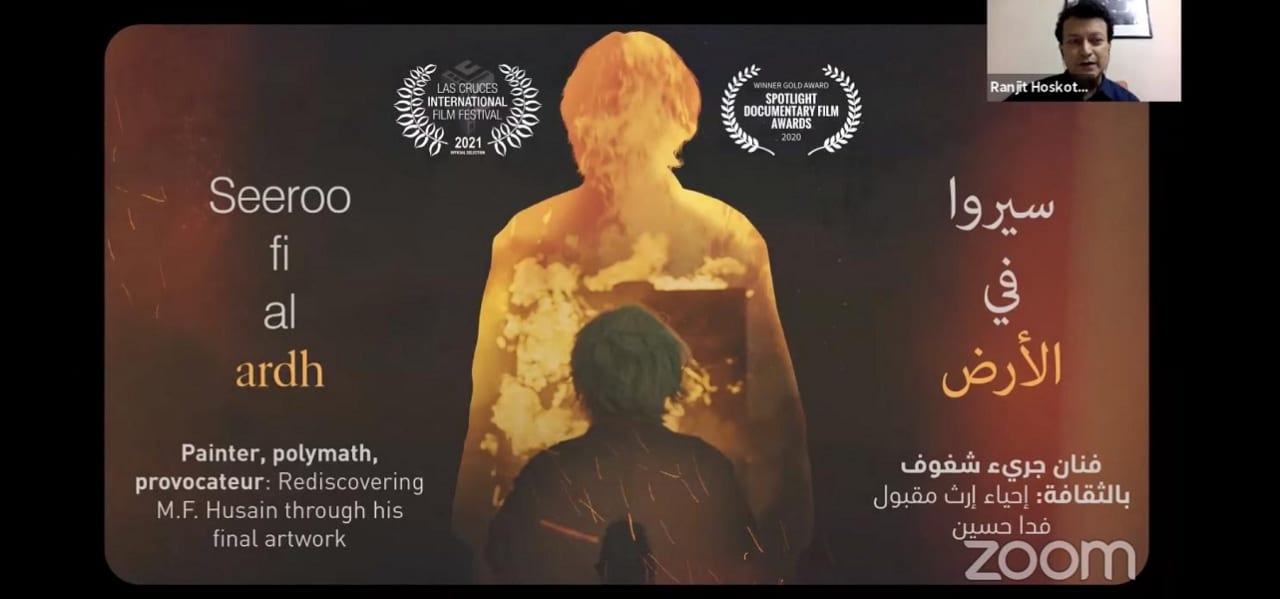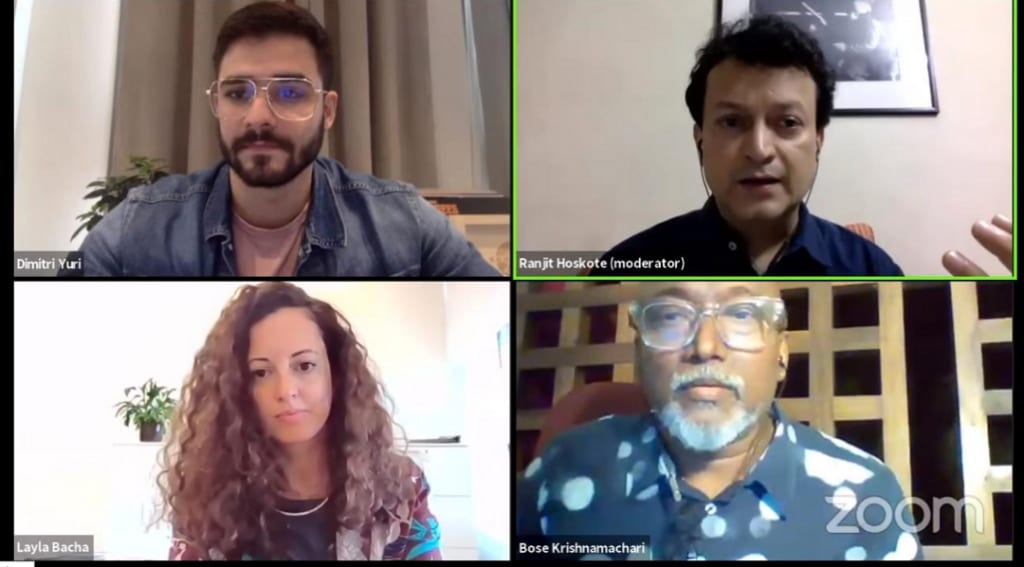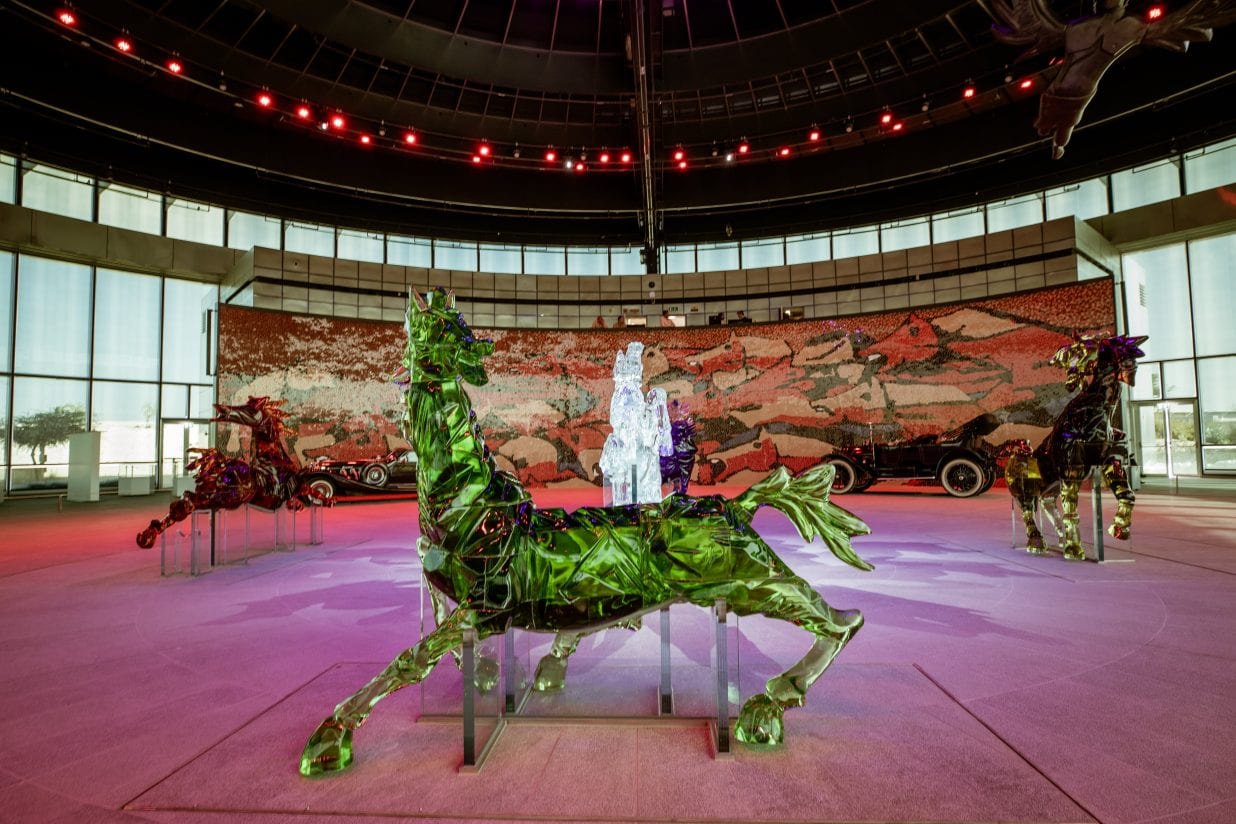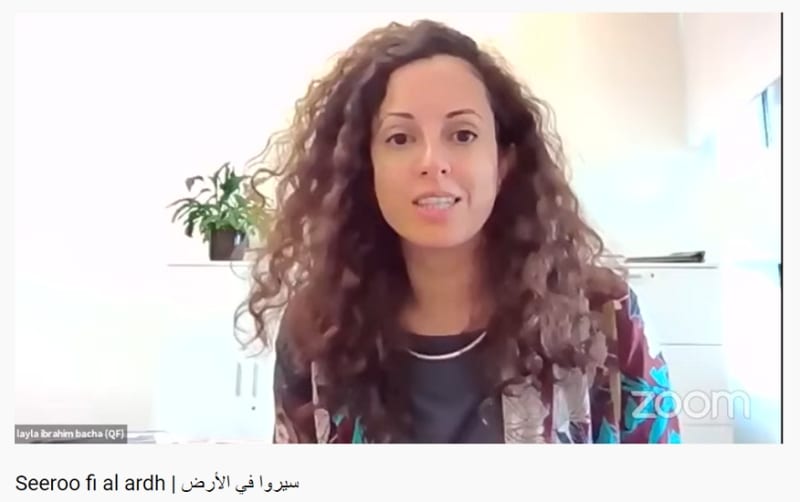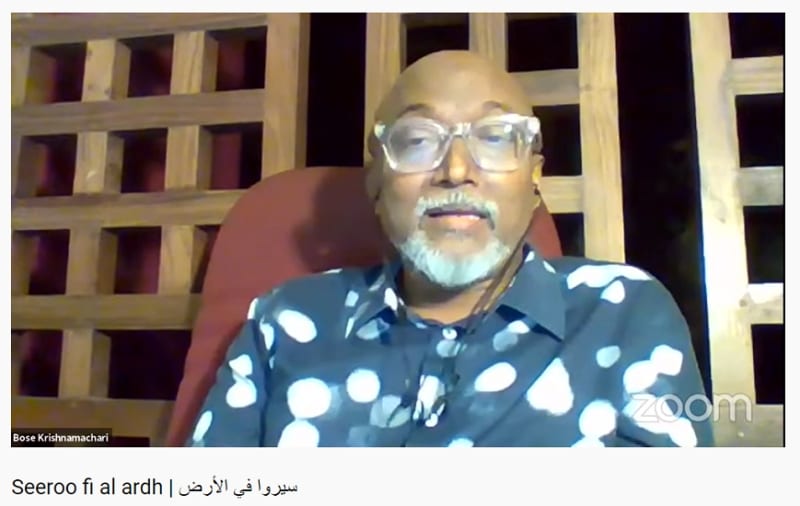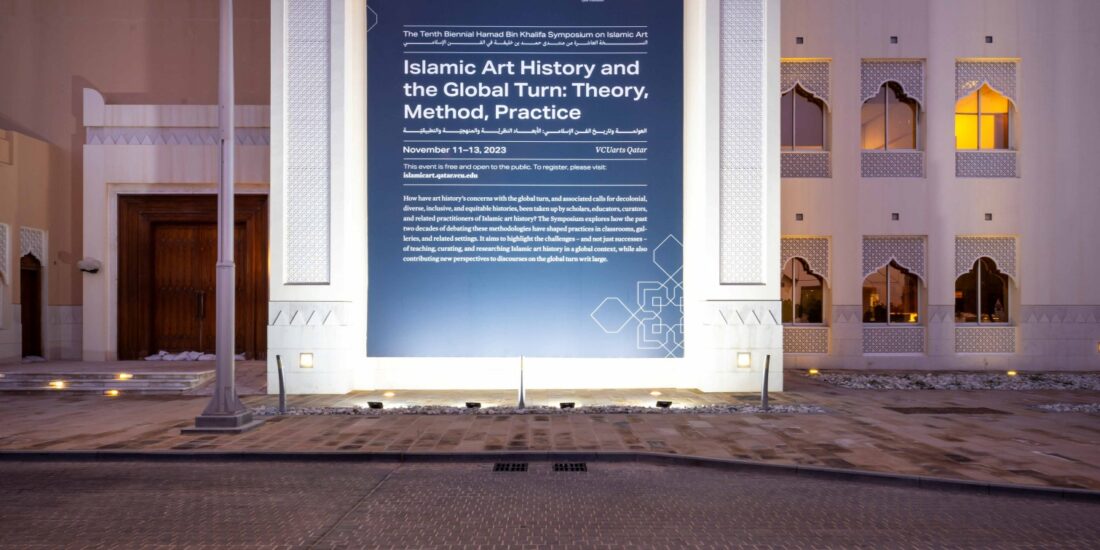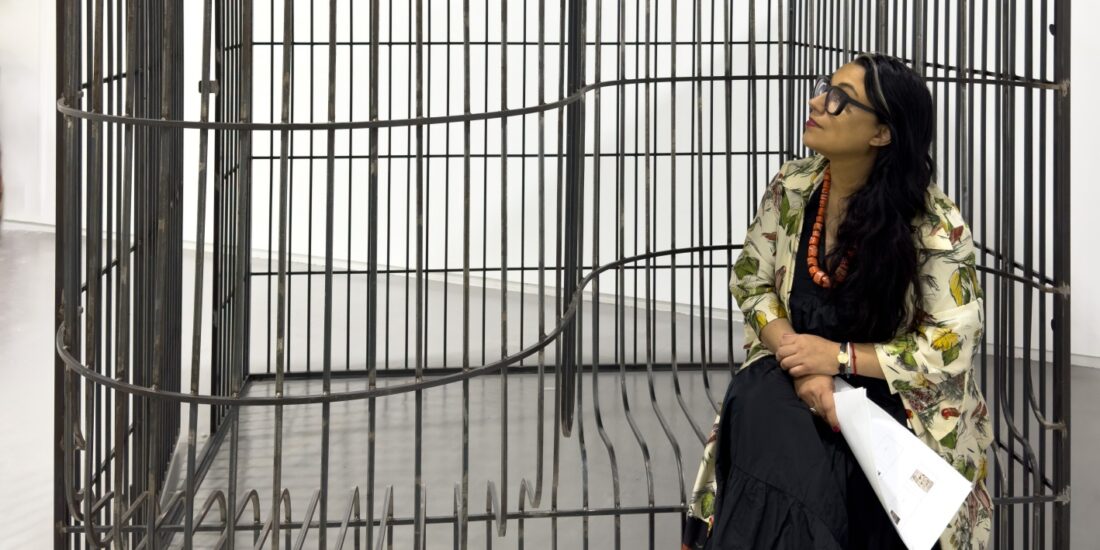“Husain is Timeless and So is His Art”
On the 10th anniversary of the legendary artist, M.F. Husain’s passing, an award-winning short documentary by The Film House, about his life, work, and genius was premiered internationally by Qatar Foundation to packed audiences. After the release of the documentary, a panel discussion that brought together experts from India and Qatar, delved into what makes Husain – and Seeroo fi al ardh, his last artwork in Qatar, so special.
As the documentary was screened, a deep sense of loss was felt by more than 5,500 of the live audiences from around the world and across various mediums, all gathered to remember a genius whose work was more than art, but work that created a long-term impact. One of the most important artists of the 21st century, M.F. Husain had completed over 40,000 artworks in his lifetime, and his passion was always in creating art that provoked tremendous waves of response. He was someone who used art to expand the public and civic imagination. His love for cinema stemmed from his initial days when he used to draw Bollywood billboards, and which culminated in an award-winning film. His vast repertoire as an artist included: sculpture, mosaic, music, cinema, poetry, and much more. Among the many detours of his life, Husain even had a brief stint as a toymaker. Indeed, all his works were meant for public consumption, for the young and old, but especially children. At home in India and here in Arabia, he saw the world with the wonder of a child, the wisdom of a philosopher, and the joy of a discoverer.
Ranjit Hoskote, poet, art critic, cultural theorist, and independent curator, and a close friend of Husain, who moderated the discussion remembered the instance when the news of the death of the artist was conveyed to him: “I was in Venice after having installed India’s first-ever national pavilion at the Venice Biennale, which I curated. It was a deep sense of loss. On one hand, a triumph for Indian art in Venice. On the other hand, a tragedy for Indian art with Husain’s death.”
Touching on the controversies that led Husain to flee his home country, Ranjit says, “This is not the story of an artist insulting his audience but that of the audience ceasing to understand what the artist had always wanted to portray. One could not have a more plural, more responsible, more generous spirit than that of Husains’.”
As the audience paused in respect for the artist, the focus of the last and final work of Husain, the lasting testimony of his timeless art, was referred to. According to each of the panelist, Seeroo fi al ardh, a culmination of all the art forms practiced by the artist, would be a huge boost for Qatar’s art profile, a “destination” that will help put the country on the global art map.
Commissioned by Her Highness Sheikha Moza bint Nasser, Chairperson of Qatar Foundation (QF) , Seeroo fi al ardh – which opened in December 2019 – is regarded by many as Husain’s crowning masterpiece. Envisaged by the artist before he passed away in 2011, and designed to tell the story of how innovation steered the progress of civilization in the Arab region through a multidimensional creative experience, it was the most ambitious work of his career – and it has now been brought to reality in a permanent home at Qatar Foundation’s (QF) Education City.
“The appeal of Husain is magnetic and universal,” explained Ranjit, “To me, it seems that Seeroo fi al ardh is the manifestation of his desire to create an installation that is open, interactive, and brings people in to experience art in a multidimensional way. Husain drew his inspiration from the great, continuing human adventure, and his last work continues to speak for him – standing at QF and open to the world, perhaps marking the apex of his creative vision.”
Seeroo fi al ardh is an installation of unprecedented size and investment that is an ode to one of the most imaginative and creative minds joining forces with a determined patron. This unusual art installation, in all its complexity, serves a simple purpose: to pay tribute to mankind’s spirit of innovation. The artwork tells the story of human progress, which began with mankind walking through this earth to discover the wonders of God’s creations. This is an artwork imagined to be both kinetic and experiential. The artist visualised the installation in one of his sketches from 2009, having a mosaic wall painting depicting horses, a sculpture of Abbas ibn Firnas suspended from the ceiling, a sculpture of da Vinci’s flying machine, coloured glass horses, and vintage cars. In his own words, “the entire ensemble is like a performance of dancing horses in crystal glass set to the tune of the traditional song of horsemanship, chivalry, and strength”, according to Qatar Foundation.
According to Layla Ibrahim Bacha, Senior Art Specialist and Seeroo fi al ardh project supervisor, QF, who was among the experts discussing Husain’s influence on both the world of art and the world as a whole: “Studying and researching his writings and drawings made me realize how, when he created his work, he was not only fulfilling a creative urge but aspiring to make a long-term impact on the community around him.
“Husain did everything – painting, film, furniture, cinema billboards, as well as being a writer – and, with Seeroo fi al ardh, he joined all those elements together in one single artwork. He was completing his art journey; it is a very complex work, but we are very happy that QF was able to complete Seeroo fi al ardh as he would have expected.”
For someone who had not met Husain but had the opportunity to try to understand him through his studio, the way he worked, and how his work tools were stored and used, Layla was intrigued by how unpredictable Husain was and how his creative instincts were so vast and unprecedented. “I cannot express my wonder at the way this artist worked and how he influenced those around him through his work and will continue through the legacy he has left us.”
“As a place of education, the educational aspect of art, and how knowledge is transferred from it and how it is provided for everyone to see, is very important to QF. We are confident that Seeroo fi al ardh will be a destination not only for our community in Qatar but for those visiting or just passing through the country – it’s something to come here and see, even for just a few hours, because it is a one-of-a-kind experience.”
Bose Krishnamachari, an artist, curator, and President of the Kochi Biennale Foundation, described seeing Seeroo fi al ardh come to fruition in the way Husain intended as being “amazing”, and characterised the artist as “generous, passionate – and impatient”. Bose touched on Husain’s generous spirit with examples of sketching portraits for his fans or meeting kids without any fanfare and joining them in artistic endeavours. “He was an artist who was known by the entire world, there was no other artist who had such a level of recognition with the common man.”
“A great artist is unpredictable,” he explained. “With Husain, you could never read him or tell what he was going to do next, and that is one of the reasons he sustained.
“As well as being timeless, he was also timely and remained relevant to what was going on in the world. If he was alive today, he would be working with scientists and startups to make something new.”
And Dimitri Yuri, award-winning director at The Film House and a QF alumnus, spoke about how he “jumped at the chance” to crystallise Husain’s life into just 10 minutes through the documentary, saying: “We tried to tell his story in a way he would be happy with – being creative, as he would have wanted us to be.
“What fascinated me was that he was an observer of the world and the human experience, and Seeroo fi al ardh highlights this. Looking at his work is like watching a performance of life happening in front of us. I can’t shake the feeling that when he was watching the things we experience every day, he saw it as the most beautiful and complex thing he had ever seen. That shines through in his work.”
Dimitri was also fascinated by Husain’s nature of not taking anything too seriously, just like his son, Mustafa Husain, has mentioned in the documentary that Husain never had any baggage and was always light in mind, free from anger. “He often talked about either giving his work the due importance by keeping it in a museum and then if not, just to burn it all away, as if he understood that while the impact of the work might stay on, the physical works of his could be forgotten.”
 The Seeroo fi al ardh documentary has been selected for the Las Cruces International Film Festival, the Jaipur International Film Festival, and the 10th Bangalore Shorts Film Festival, and has won awards at the Crown Wood International Film Festival in India, and the Spotlight Doc Awards.
The Seeroo fi al ardh documentary has been selected for the Las Cruces International Film Festival, the Jaipur International Film Festival, and the 10th Bangalore Shorts Film Festival, and has won awards at the Crown Wood International Film Festival in India, and the Spotlight Doc Awards.
Seeroo fi al ardh is currently closed to the public due to COVID-19, according to QF, but will reopen to the public later in the year, and more details will be announced closer to the time. To watch the documentary and webinar, and find out more about M.F. Husain’s unique final work, visit www.qf.org.qa/community/seeroo-fi-al-ardh
SCALE was a partner with Qatar Foundation for this event that will live on in the annals of art history.

